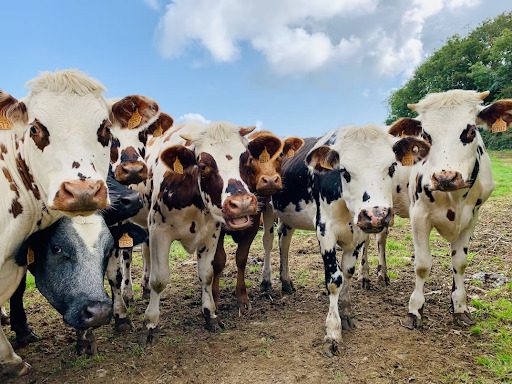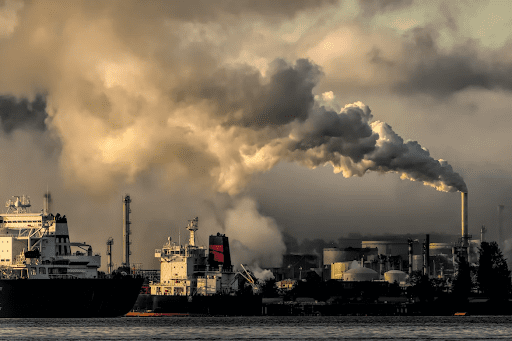The world has been attempting to reduce carbon emissions for at least thirty years. And in that time, the total concentration of carbon dioxide in the atmosphere has nearly doubled. Worse still, it’s accelerating at an alarming rate. CO2 concentrations are now going up faster than before, despite all the investment in green tech, thanks to the rise of emerging market economies and mass consumption in Asia.
Many scientists are now saying that simply reducing carbon emissions isn’t enough. Even if we hit net zero by mid-century, there will still be a legacy of CO2 in the atmosphere. And this could continue to warm the planet for hundreds of years, potentially to dangerous levels considerably worse than what people are experiencing today. In other words, simply shutting down modern economies and hoping for the best isn’t a good strategy.
Due to this, technologists are trying to come up with solutions. They believe that, with the right approach, it might be possible to stop the climate crisis in its tracks and prevent the mass extinction event currently underway. There may be a way that humanity can engineer itself out of the destruction that it faces, they claim.
So what technologies are out there? And how do they work?
Carbon Capture
As stated in the introduction, simply reducing the amount of CO2 pumped into the atmosphere isn’t a solution. CO2 levels are already dangerously high compared to the historical norm. And if left unchanged, they will have a profound, long-term impact on global temperatures.
The need today is to find a way to take carbon back out of the atmosphere. Unfortunately, asking nature to do this probably isn’t possible. It doesn’t matter how many trees people plant, it’s not enough to make a dent in total atmospheric carbon concentrations. You could cover the entire planet in forest and it wouldn’t return CO2 levels to pre-industrial times.
The technology to solve this problem is called carbon capture and storage. Essentially, it involves setting up giant machines that use chemical processes to sequester carbon from the atmosphere and bury it in bales deep underground.
The technology requires substantial energy to run. But if this can be done using renewable energy sources, then it won’t add more carbon to the atmosphere. Ultimately, the world needs around 100,000 of these facilities, preferably powered by fusion power plants to suck all the excess carbon from the atmosphere and reduce the greenhouse effect. It’s a massive project, and unlikely to succeed without other efforts.
Seaweed-Fed Cows

According to recent research, around 25 percent of vertebrate biomass on the planet is human. A further 5 percent is all the wild species, leaving 70 percent of animals on farms. Of this percentage, a large chunk is cattle.
Unfortunately, cattle are responsible for two-thirds of all of humanity’s methane emissions. And this gas is a much more potent greenhouse gas than CO2. (We just don’t hear as much about it because it is a smaller percentage of the atmosphere).
Cows’ regular chow, including grass, creates a lot of methane when digested. But if cows ate seaweed instead, their emissions would go down by around 80 percent.
The only problem is finding enough seaweed to feed the world’s 1.5 billion cattle.
Climate Repair
Detailed drone photogrammetry over Greenland and the Artic shows the extent of damage that a changing climate is doing to the polar regions. Ice sheets are becoming thinner and retreating dramatically.
Because of this, many scientists are advocating the concept of “climate repair.” The idea is to use technology to get the Earth’s climate system to behave as it did in, say, 1900.
One idea is to refreeze the pole by spraying small droplets of salt in the sky. These drops will reflect incoming solar radiation, helping to cool temperatures, perhaps by a couple of degrees.
Another idea is to fertilize the oceans to produce more green algae blooms. These will capture carbon from the atmosphere and then deposit it on the sea bed where it will remain trapped.
However, these ideas have drawn significant skepticism. Commentators worry about the effect that playing with the atmosphere could have on all wildlife and the climate system. A human fix could still throw the world out of balance and lead to other disasters down the road.
Remote Work
Strange as it might sound, COVID-19 and remote work may have done more to fight climate change than anything else. Getting workers to work from home reduces the need for CO2-emitting office blocks and cuts down on travel, too.
In today’s economy, many knowledge economy jobs can be done with just a home laptop computer. There is no practical reason people need to come into the office in many cases.
This approach will be particularly helpful in addressing climate change in developed economies. It won’t work as well in developing nations where production is more capital and energy-intensive.
Household Energy Efficiency Drives

Another idea is to help households become more energy efficient. Doing this may slow the speed at which the planet warms and give scientists an extra couple of decades to figure out how to respond.
In many cases, the technology to achieve greater home energy efficiency already exists. People can potentially knock huge amounts off their annual energy bills, simply by switching to new and better appliances. Estimates suggest that homes can potentially cut their energy usage by a third by choosing better products.
Mirrors In Space
Lastly, some researchers advocate the idea of putting mirrors in space to reflect back the sun’s light. If technology can reduce the amount of solar radiation reaching the Earth, that will prevent warming.
There are concerns about such projects, though. The costs are likely to be high. And societies would need to maintain such systems for hundreds of years. If for some reason funding ran out and solar energy-blocking technologies failed, the Earth would warm dramatically (more so than it is right now), thanks to the CO2 already present. It could exacerbate societal collapse.



































